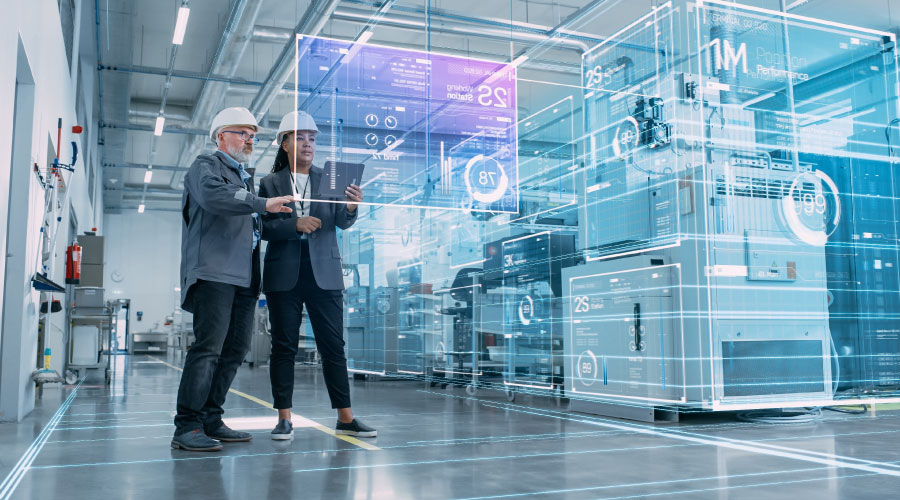The Crucial Overview to Facility Monitoring: Strategies for Success
Facility monitoring plays an essential role in the overall success of an organization, offering as the backbone that sustains productivity, efficiency, and safety and security. The nuances of effective center management expand past mere logistics and call for a detailed understanding of both measurable and qualitative metrics.
Comprehending Facility Administration
What constitutes reliable facility monitoring? Reliable center management incorporates the sychronisation of various organizational features to ensure that built settings are secure, reliable, and helpful to efficiency. Facility Management. It integrates the principles of business, architecture, and engineering management to develop a seamless functional flow within a company
Key elements of facility administration consist of space planning, upkeep monitoring, and conformity with wellness and safety policies. Room preparation concentrates on enhancing the usage of physical sources to sustain business objectives, while upkeep administration makes certain that centers are kept in optimal condition, maximizing lifespan and minimizing functional prices. Conformity with regulatory and legal requirements is essential, as it safeguards the company against potential obligations and enhances its track record.
Furthermore, effective center monitoring relies on the strategic use modern technology, such as Structure Monitoring Equipment (BMS) and Computer-Aided Center Monitoring (CAFM) devices. These innovations assist in real-time surveillance of structure systems and improve upkeep processes. Eventually, an extensive technique to facility administration not only advertises functional efficiency but additionally fosters a favorable setting for site visitors and workers alike, driving total organizational success.
Key Techniques for Optimization
Enhancing center administration needs a strategic method that straightens functional experiment organizational objectives. To accomplish this, the very first key method is the implementation of incorporated technological solutions. Making use of sophisticated software program systems permits real-time tracking of facility procedures, assisting in data-driven decision-making and enhancing total effectiveness.
Second of all, routine assessments of center performance are necessary. Conducting routine examinations and audits allows facility supervisors to recognize areas that need improvement, guaranteeing that sources are alloted properly. This positive approach assists in minimizing downtime and boosting service shipment.
One more vital technique is promoting partnership throughout departments. By urging open communication in between teams, facility supervisors can better straighten their methods with service objectives, causing enhanced operational synergy. Additionally, engaging team in training programs advertises a society of responsibility and improves their ability to add to optimization initiatives.
Enhancing Security Methods
Enhancing safety procedures is essential for producing a secure atmosphere within facilities. An extensive safety and security protocol not only shields site visitors and employees but likewise improves functional efficiency. To attain this, center managers need to perform normal threat evaluations to identify possible threats and make sure that proper procedures are in location.
Training and education are crucial elements of efficient safety methods - Facility Management. Employees must get ongoing training in emergency situation treatments, equipment handling, and personal protective steps. Regular drills, such as fire emptyings or lockdown treatments, foster experience and readiness among staff
Additionally, clear communication channels must be developed to report safety concerns without delay. This includes producing an easily accessible platform for staff members to articulate potential risks or events without fear of . Moreover, leveraging innovation can improve security procedures; for instance, applying security systems and gain access to controls assists keep track of center tasks and limit unauthorized entry.
Last but not least, conformity with neighborhood regulations and industry requirements is non-negotiable. Regular audits and testimonials of security procedures make sure alignment with present laws and ideal basics methods. By prioritizing these approaches, facility managers can cultivate a society of safety that protects all stakeholders and eventually adds to the company's success.
Improving Work Environment Setting

Ergonomic considerations are necessary to reduce physical stress and discomfort. Facility Management. This entails offering flexible furniture, appropriate illumination, and appropriate space for motion. These changes can result in lowered absenteeism and raised work contentment
Appearances play an important function in forming the workplace ambience. Using shade psychology, all-natural illumination, and plant can cultivate a welcoming and stimulating atmosphere. Attentively created rooms he said can increase imagination and enhance overall health.
Moreover, encouraging worker involvement with comprehensive decision-making processes can improve the feeling of ownership and belonging. Collecting responses on office improvements and entailing staff members in the layout process can lead to a much more customized setting that meets their demands.
Last but not least, advertising well-being campaigns, such as health cares and relaxation spaces, can further add to a supportive office culture. By concentrating on these techniques, center supervisors can successfully improve the workplace environment, driving both staff member complete satisfaction and organizational success.
Gauging Success in Facilities
Determining success in facility monitoring requires a comprehensive technique that reviews both qualitative and measurable metrics. Measurable metrics generally include key efficiency signs (KPIs) such as room use prices, energy consumption, maintenance prices, and tenancy levels. These metrics provide a clear photo of operational performance and economic efficiency, permitting facility supervisors to determine locations for renovation and criteria versus industry criteria.
Qualitative metrics, on the other hand, focus on individual satisfaction and employee interaction. Studies and comments mechanisms can determine just how well the centers meet the needs of owners, aiding to examine the general office setting. This element is critical, as a completely satisfied labor force is frequently linked to enhanced efficiency redirected here and retention prices.
To successfully measure success, center supervisors ought to likewise think about integrating modern technology, such as building monitoring systems and data analytics devices, to gather and assess relevant information. Regularly reviewing both collections of metrics permits a much more balanced sight of efficiency and educates tactical decisions. Inevitably, an effective facility management method rests on a commitment to continual renovation, making sure that both operational performances and customer complete satisfaction are prioritized.
Final Thought

Center administration plays an important duty in the overall success of a company, offering as the backbone that supports efficiency, productivity, and security.Trick components of center administration include room planning, upkeep administration, and conformity with wellness and safety and security policies.Moreover, reliable center administration relies on the critical use of modern technology, such as Building Administration Solution (BMS) and Computer-Aided Facility Administration (CAFM) tools. Inevitably, a thorough technique to facility management not just promotes operational effectiveness yet likewise fosters a positive environment for employees and site visitors alike, driving overall organizational success.
Comments on “Facility Management Trends That Are Shaping the Future of Workplace Dynamics”